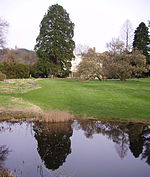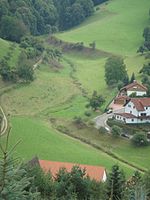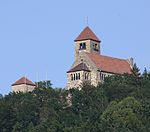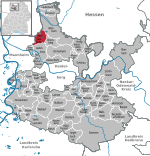Miramar (Weinheim)

Miramar is a water park, salt-water spa and sauna complex opened in 1973 at the Waidsee Lake, Weinheim, Germany. As of 2014, approximately 50% of the 650,000 annual visitors pay extra for the Sauna area. The catchment area for visitors covers a 100 kilometres (60 mi) radius, including Frankfurt am Main to the north, and Pforzheim to the south.The main bathing area contains a wave pool and several slides. As of 2018 there were nine water slides in the main indoor pool area with various levels of difficulty and speed, plus jacuzzis and outside areas. The thermal spa area has saltwater pools, and these pools are also used to offer physiotherapy.The sauna area is designated as a nudist/Freikörperkultur (FKK) area, which is extended to the swimming and thermal spa areas on Tuesday evenings.
Excerpt from the Wikipedia article Miramar (Weinheim) (License: CC BY-SA 3.0, Authors, Images).Miramar (Weinheim)
Waidallee,
Geographical coordinates (GPS) Address Phone number Website External links Nearby Places Show on map
Geographical coordinates (GPS)
| Latitude | Longitude |
|---|---|
| N 49.533 ° | E 8.643 ° |
Address
Miramar
Waidallee 100
69469 , Weststadt
Baden-Württemberg, Germany
Open on Google Maps








